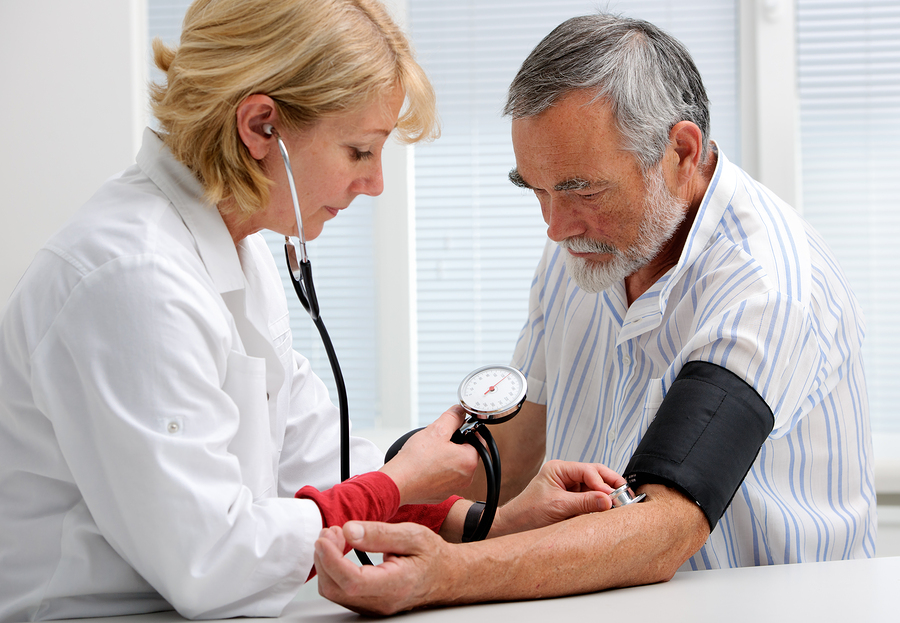High blood pressure in people over 65 is a serious condition. Fortunately, it can be treated in a number of different ways. Eating smarter and getting more exercise can lower BP into normal range. But many people will also have to take blood pressure medications to get the results they need.
High blood pressure, also called hypertension, is tricky, because it rarely comes with pain, except for a few people who get headaches from very high BP. The painlessness leads many people to ignore their blood pressure. But doing so is dangerous.
According to the National institutes of Health, blood pressure is the most common health condition experienced by people over 65. And untreated high blood pressure leads to heart disease, heart attacks, loss of vision, loss of kidney function, and stroke, to name the most prevalent outcomes.
Systolic and diastolic pressures
Every blood pressure reading comes with two measurements. Typically the first number is higher and it is called “systolic” pressure. Systolic numbers indicate the pressure in the arteries when the heart beats. A normal systolic pressure will be under 130 in people over 65. And it needs to be lower in younger folk. High systolic pressures are a matter of concern for people over 65 because they indicate an increased risk for mortality.
The diastolic number indicates the pressure in the arteries between heart beats, when the heart is resting. A normal diastolic pressure is under 80.
Low blood pressure is a rarer problem, but there is such a thing as too low. Any blood pressure lower than 90/60 may need to be treated.
Home blood pressure monitors
If your senior’s blood pressure is too high, caregivers do not need to wait for the next doctor’s visit to measure it again. You can easily take your parent’s blood pressure, using a home blood pressure monitor. A home care professional can also take a parent’s blood pressure several times a week and keep your family abreast of changes.
Some blood pressure monitors plug in and others are battery operated. The New York Times recommends the Beurer BM55 blood pressure monitor. It is easy to read and to use, retains records for two home users, and detects irregular heart beats. Its cost is $55-60, and its armband fits most arms.
To take your senior’s blood pressure, plug in the device if it is not battery operated, place the cuff around your senior’s upper arm. It should fit snugly. Press the on button and, as needed, the button to measure pressure. The cuff tightens, and it may be a little uncomfortable for a few seconds, but the cuff relaxes as soon as the blood pressure has been logged. The pressure then appears on the screen.
In conclusion, blood pressure is sometimes called the “silent killer” because it doesn’t really warn the patient of trouble ahead. That’s why it is so important for caregivers to listen to their seniors’ doctors. If a doctor recommends a course of treatment to lower blood pressure, encourage your senior to follow it.
Sources
https://www.ncbi.nlm.nih.gov/pmc/articles/PMC5732407/
https://www.nia.nih.gov/health/high-blood-pressure
https://www.health.harvard.edu/blog/blood-pressure-goals-may-need-to-change-with-age-201207205034
https://www.nytimes.com/wirecutter/reviews/best-blood-pressure-monitors-for-home-use/
If you or an aging loved one is considering hiring caregivers in Cupertino, CA, please contact the caring staff at Home Helpers today (408) 317-4969.

